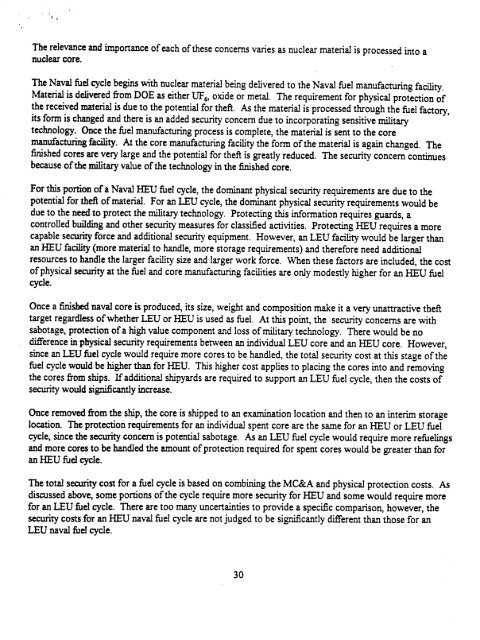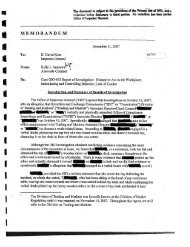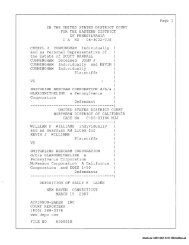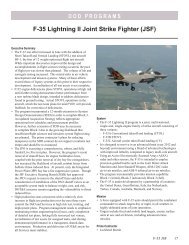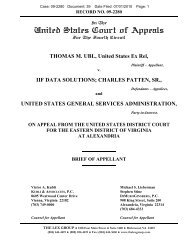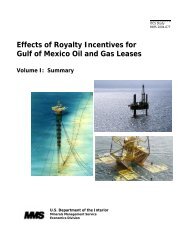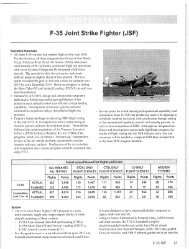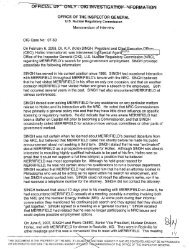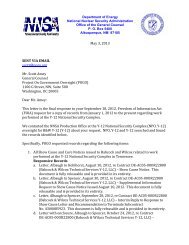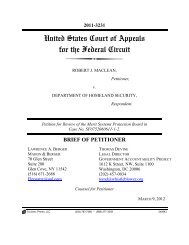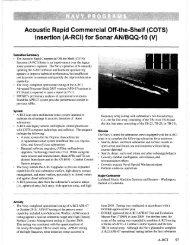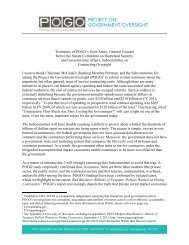REPORT ON IN NAVAL NUCLEAR JUNE, 1995
REPORT ON IN NAVAL NUCLEAR JUNE, 1995
REPORT ON IN NAVAL NUCLEAR JUNE, 1995
Create successful ePaper yourself
Turn your PDF publications into a flip-book with our unique Google optimized e-Paper software.
, ,<br />
The relevance and importance of each of these concerns varies as nuclear material is processed into a<br />
nuclear core.<br />
The Naval fuel cycle begins \'-lith nuclear material being delivered to the Naval fuel manufacturing facility.<br />
Material is delivered from DOE as either UF 6' oxide or metal. The requirement for physical protection of<br />
the received material is due to the potential for theft. As the material is processed through the fuel factory,<br />
its form is changed and there is an added security concern due to incorporating sensitive military<br />
technology. Once the fuel manufacturing process is complete, the material is sent to the core<br />
manufacturing facility. At the core manufacturing facility the form of the material is again changed. The<br />
finished cores are very large and the potential for theft is greatly reduced. The security concern continues<br />
because of the military value of the technology in the finished core.<br />
For this portion of a Naval HEU fuel cycle, the dominant physical security requirements are due to the<br />
potential for theft of material. For an LEU cycle, the dominant physical security requirements would be<br />
due to the need to protect the military technology. Protecting this information requires guards, a<br />
controlled building and other security measures for classified activities. Protecting REU requires a more<br />
capable security force and additional security equipment. However, an LEU facility would be larger than<br />
an REV facility (more material to handle, more storage requirements) and therefore need additional<br />
resources to handle the larger facility size and larger work force. \Vhen these factors are included, the cost<br />
of physical security at the fuel and core manufacturing facilities are only modestly higher for an HEU fuel<br />
cycle.<br />
Once a finished naval core is produced, its size, weight and composition make it a very unattractive theft<br />
target regardless of whether LEU or REV is used as fuel. At this point, the security concerns are with<br />
sabotage, protection of a high value component and loss of military technology. There would be no<br />
difference in physical security requirements between an individual LEU core and an REU core. However,<br />
since an LEU fuel cycle would require more cores to be handled, the total security cost at this stage of the<br />
fuel cycle would be higher than for REU. This higher cost applies to placing the cores into and removing<br />
the cores from ships. If additional shipyards are required to support an LEU fuel cycle, then the costs of<br />
security would significantly increase.<br />
Once removed from the ship, the core is shipped to an examination location and then to an interim storage<br />
location. The protection requirements for an individual spent core are the same for an REU or LEU fuel<br />
cycle, since the security concern is potential sabotage. As an LEU fuel cycle would require more refuelings<br />
and more cores to be handled the amount of protection required for spent cores would be greater than for<br />
an REU fuel cycle.<br />
The total security cost for a fuel cycle is based on combining the MC&A and physical protection costs. As<br />
discussed above, some portions of the cycle require more security for HEU and some would require more<br />
for an LEU fuel cycle. There are too many uncertainties to provide a specific comparison, however, the<br />
security costs for an HEU naval fuel cycle are not judged to be significantly different than those for an<br />
LEU naval fuel cycle.<br />
30


